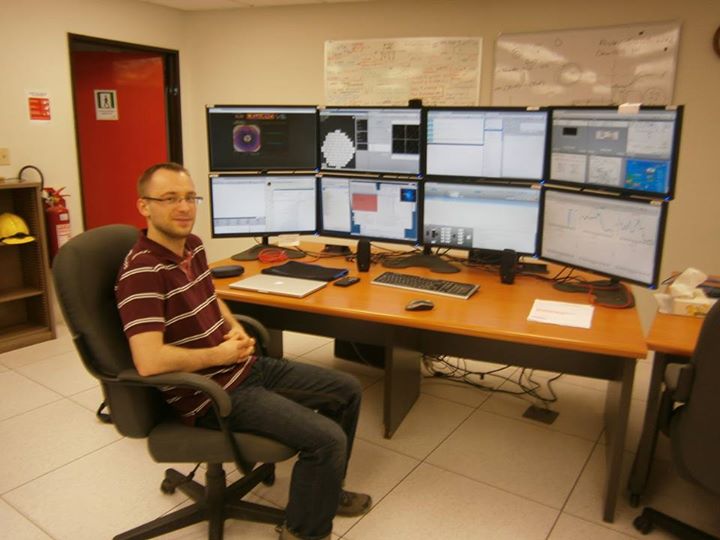 Tomasz’s research is focused on cosmological measurements using weak gravitational lensing. This unique method allows us to directly probe the effects of invisible dark matter distributed in space. But the most amazing thing is that we are also able to ‘see’ back in time – we probe the dark matter half way back in the history of the universe.
Tomasz’s research is focused on cosmological measurements using weak gravitational lensing. This unique method allows us to directly probe the effects of invisible dark matter distributed in space. But the most amazing thing is that we are also able to ‘see’ back in time – we probe the dark matter half way back in the history of the universe.
His work consists of analysis of galaxy images to find their shapes and then using them, in a statistical way, to measure the effect of gravitational lensing. One of the methods to determine which cosmological model is correct is to identify ‘peaks’ in the lensing signal which correspond to large dark matter halos. Various cosmological models predict different numbers of these dark matter halos. By comparing the numbers of detected shear peaks in the Dark Energy Survey and in the simulated universe, we are able to determine which cosmological model is right.
We asked Tomasz a few more questions – here’s what he had to say:
When did you know you wanted to be a scientist?
It was precisely when I was doing a problem set for my ‘signal processing’ class some 10 years ago, which I found extremely interesting. It was when I realised that I enjoy this kind of work very much!
What motivates / inspires you?
There is a certain type of people which I find the most inspiring: those who constantly ask difficult questions, think in a different way, do not shy away from proposing alternative interpretations and always keep the most skeptical approach. Those who can ask “hey wait, but why?”.
Do you have any hobbies or play any sports?
Yes! This spring the team made out of members of our Astronomy Group participated in Zurich running relay race, “SOLA”, total of 140 km. Out of >900 teams, we managed to have a better than average time!